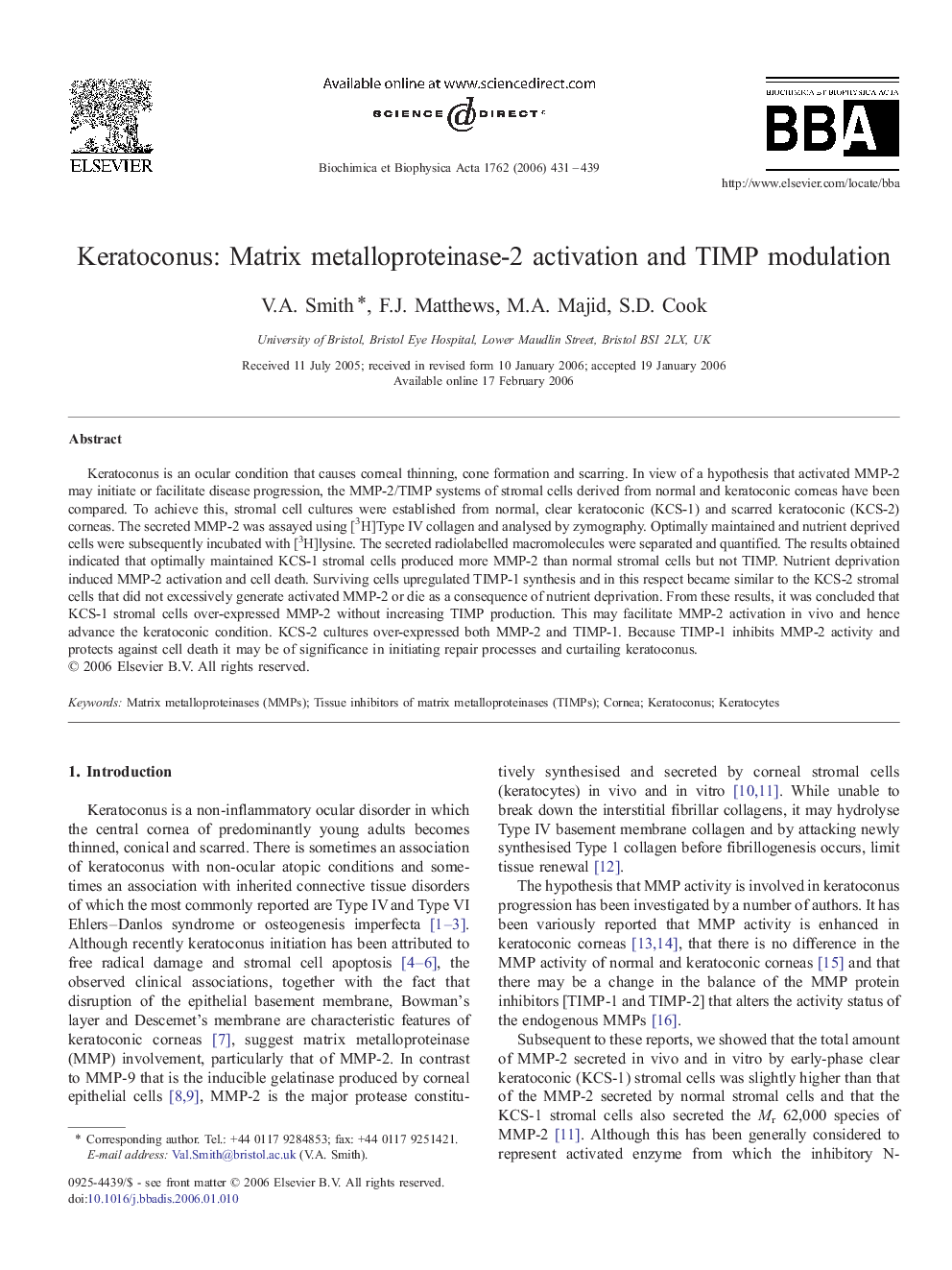| Article ID | Journal | Published Year | Pages | File Type |
|---|---|---|---|---|
| 1906032 | Biochimica et Biophysica Acta (BBA) - Molecular Basis of Disease | 2006 | 9 Pages |
Keratoconus is an ocular condition that causes corneal thinning, cone formation and scarring. In view of a hypothesis that activated MMP-2 may initiate or facilitate disease progression, the MMP-2/TIMP systems of stromal cells derived from normal and keratoconic corneas have been compared. To achieve this, stromal cell cultures were established from normal, clear keratoconic (KCS-1) and scarred keratoconic (KCS-2) corneas. The secreted MMP-2 was assayed using [3H]Type IV collagen and analysed by zymography. Optimally maintained and nutrient deprived cells were subsequently incubated with [3H]lysine. The secreted radiolabelled macromolecules were separated and quantified. The results obtained indicated that optimally maintained KCS-1 stromal cells produced more MMP-2 than normal stromal cells but not TIMP. Nutrient deprivation induced MMP-2 activation and cell death. Surviving cells upregulated TIMP-1 synthesis and in this respect became similar to the KCS-2 stromal cells that did not excessively generate activated MMP-2 or die as a consequence of nutrient deprivation. From these results, it was concluded that KCS-1 stromal cells over-expressed MMP-2 without increasing TIMP production. This may facilitate MMP-2 activation in vivo and hence advance the keratoconic condition. KCS-2 cultures over-expressed both MMP-2 and TIMP-1. Because TIMP-1 inhibits MMP-2 activity and protects against cell death it may be of significance in initiating repair processes and curtailing keratoconus.
